Excerpts from Jim Conrad's
Naturalist Newsletter
from the June 28, 2018 Newsletter with notes from a camping trip of April 5th in the mountains east of Saltillo, Coahuila, MÉXICO
Pricklypear with Red Immature Pads
Below you can see the mountaintop camping habitat, at ±7000 feet in elevation (2100m), where the following pictures were taken:
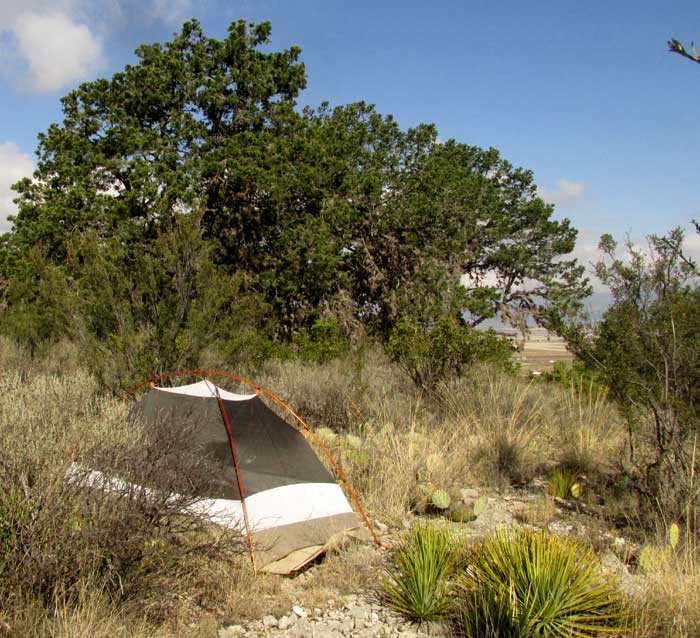
That's a Pinyon Pine in the background, and up front the spiky plants are Lechuguilla Agave. And notice how the pricklypears were scattered all around the tent. There are many pricklypear, or Opuntia, species, but this one did something spectacular I'd never seen before, shown below:
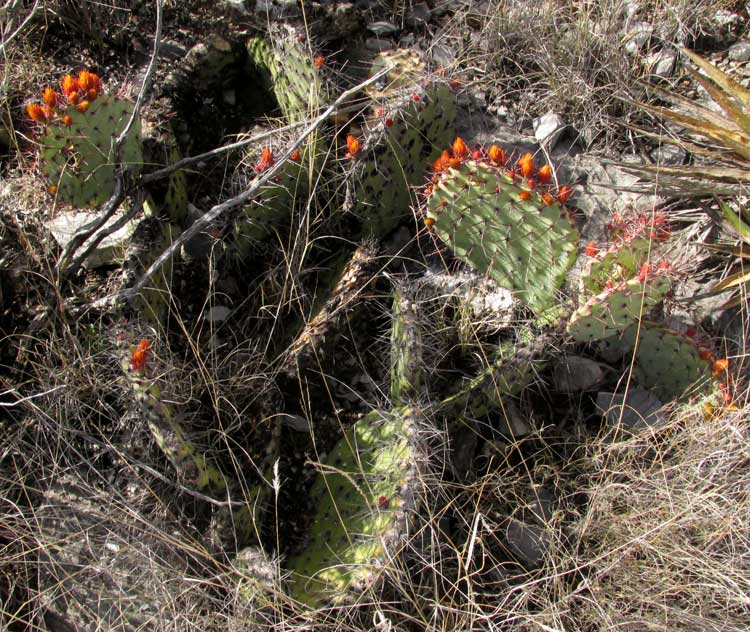
The orangish-red items aren't flowers or flower buds, and their presence is extraordinary. A closer look at them mostly arising along a pad's margins, but with a few emerging from the pad's face, is shown below:
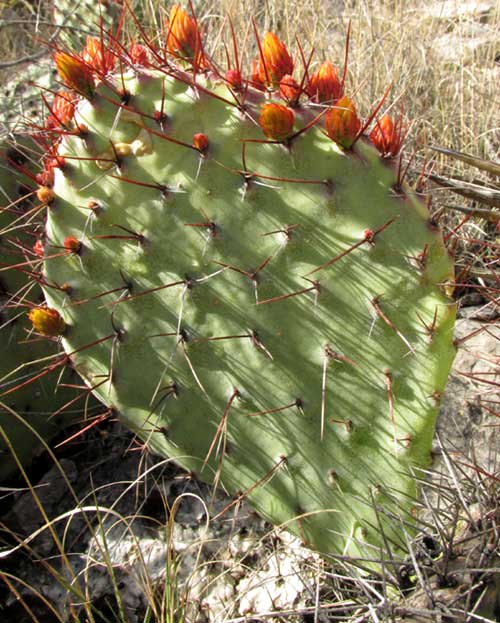
Below, you can see one of the orangish-red items after it's grown a little, revealing what we're looking at:
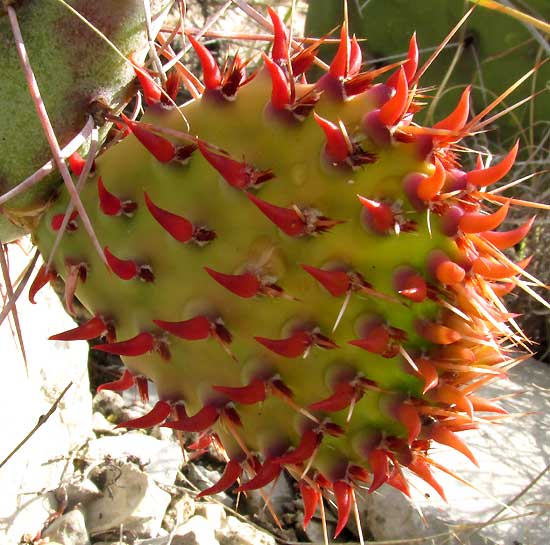
The orangish-red things are immature cactus pads, and the sharp-pointed, conical items causing the immature cactus pads to be so brightly colored are... the cactus' vestigial leaves. For, the first cacti -- as well as some primitive genera still existing -- had leaves. The vast majority of cactus kinds, however, finding that leaves lost too much water, evolved with their stems containing chlorophyll, and taking on the photosynthesizing job usually handled by green leaves. These vestigial leaves are like the human appendix, something inherited from our distant ancestors, but really of no use. The pricklypear's vestigial leaves simply fall off as the pads grow larger. Normally the leaves are green and people don't notice them.
So, what species is this? In cactus identification the size and disposition of spines is very important, so a close-up of this cactus's spine clusters is shown below:
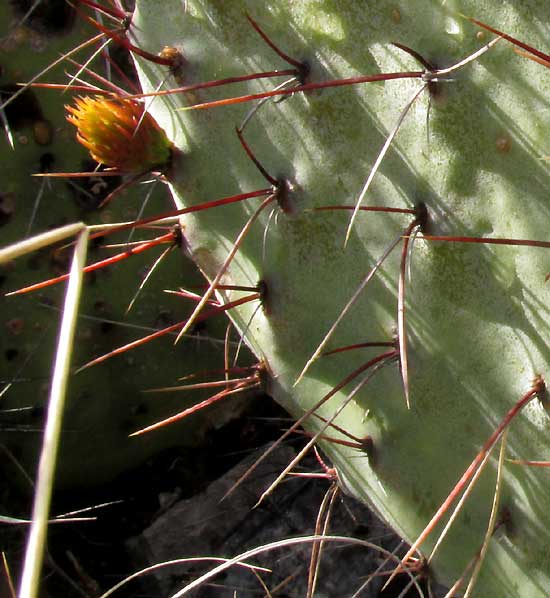
Each cluster is composed of three or so larger spines, with a few smaller ones at their bases. Spine color can be important, and these are somewhat reddish to white. An important feature is that many of the spines bend downward.
This turns out to be OPUNTIA STENOPETALA, with no commonly used English name, distributed from about here, northeastern Mexico where Coahuila and Nuevo Leon states come together, south in the Eastern Sierra Madres about to Hidlago state not far northeast of Mexico City.
entry from field notes dated January 20, 2023, taken in scrub along ridgetop ~1.5km south of Camargo, elevation ±1,700m (7280 ft); bedrock of fine-grained, calcareous mudrock; Querétaro state, MÉXICO, (N21.09°, W99.73°)
"ARRASTRADILLO," THE DRAGGED-OUT CACTUS
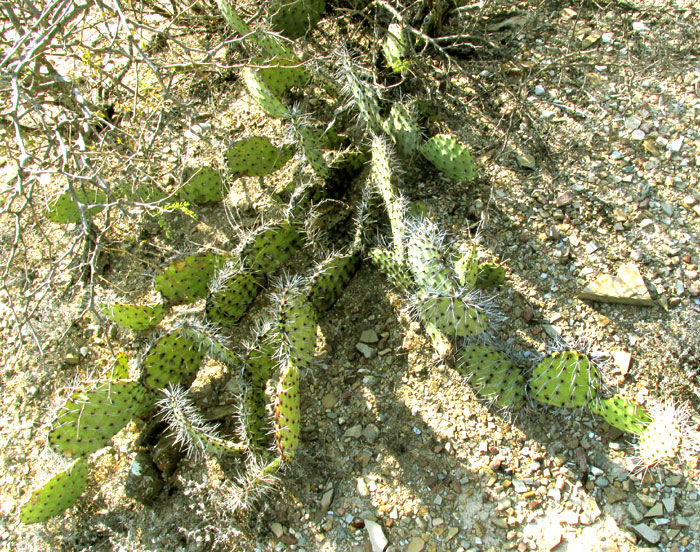
Along Hwy 120 beginning its climb through the semidesert scrub on the very rugged, west-facing slope of the Eastern Sierra Madres, from the bus window I began noticing a pricklypear species not appearing in the flatland scrub below. What caught my attention was its manner of dangling long, chainlike branches down cliff faces. A pad would produce another pad near its outermost point, then that new pad similarly would produce another pad, on and on, forming linked-together pads in a manner I'd not seen among the pricklypears. A little south of Camargo, a walk in the scrub turned up the individual shown above. Growing on level ground, its linked-together pads weren't dangling, but the long branches radiating from a central point must have been what I'd been seeing from the bus window. The sprawling branches are about 1.8m long (6ft).
Even from a distance, it's seen that the spines on this individual are unusually long for a pricklypear species, and white. That's more apparent below:
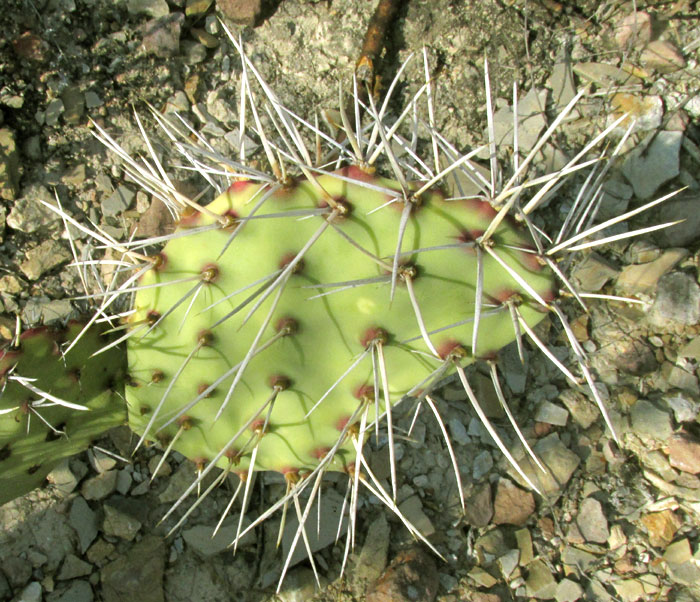
Note how the spines tend to bend. Also, at the spines' bases, the immediate areas around the areoles are purplish.
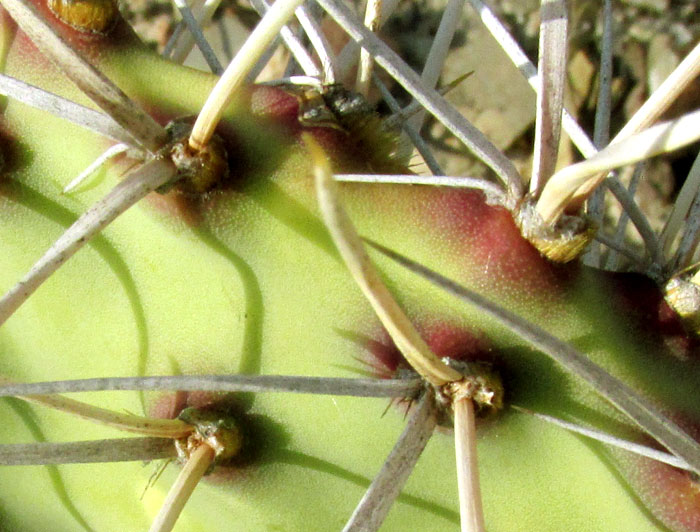
Even closer, it's seen that spine bases are flat on their inside faces but rounded outside, and that the large spines may twist. Short, stiff, pale-yellow glochids are accompanied by white hairs.
All these distinctive features didn't prepare me for the revelation that this species was the same as profiled above, seen on a mountaintop east of Saltillo, Coahuila in 2018. That cactus with its vibrantly orange-red immature flower buds and with younger spines of a dark raspberry color gave a general impression much different from this one near Camargo in Querétaro. However, the Coahuila cactus's spines also were unusually long and the older ones turned white. The Coahuila cactus didn't produce such long, trailing branches, but now that I look at the pictures again, they were indeed somewhat trailing, though not as spectacularly as this one's. Also, now the dark purple region around this one's spines' bases make more sense.
In Spanish, one of this cactus's names is Arrastradillo. That's based on the verb arrastrar, which means "to drag." When something is dragged, it's arrastrado, and if it's something little that's been dragged, using the Spanish diminutive suffix –illo, it's an arrastradillo. I guess that in English, then, that'd be "the little dragged-out cactus."